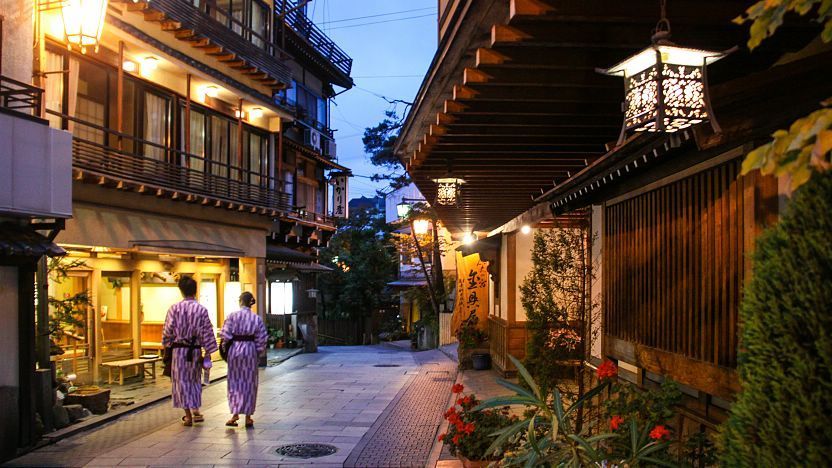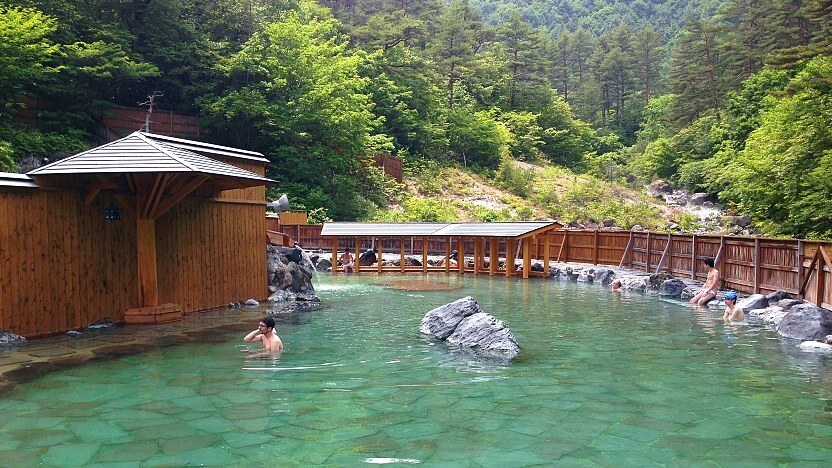How to enjoy onsen

Where to find onsen
There are thousands of hot springs across all regions of Japan, but they are particularly numerous in the more volcanically active areas of Hokkaido, Tohoku, Kanto, Chubu and Kyushu.
Some of Japan's traditional hot spring towns have histories stretching back more than 1000 years. On the other hand, modern drilling technology has allowed for the creation of hot springs virtually anywhere in Japan, even in city centers that lack natural springs. For a true hot spring experience we recommend to visit one of Japan's historic resorts where the naturally heated waters have been emerging spontaneously for centuries as opposed to modern facilities which are fed by hot water pumped up from a depth of over a kilometer.

Where to find onsen baths
At their most basic, hot spring baths can be found in the middle of nature with no facilities provided, at all. There are several places in Japan where you can experience onsen like this, but they often require some hiking to be reached.
The typical tourist will encounter onsen baths at either an accommodation or a public bath.
To many, the ultimate hot spring experience is spending a night at an onsen ryokan, a Japanese-style inn with hot spring baths. This is not only one of the most popular holiday activities among Japanese people, but is also highly recommended to any foreign visitor.

Onsen ryokan vary from small wooden buildings to huge concrete complexes. Some stand alone in remote forests while others are part of large, built-up hot spring towns. A typical stay at an onsen ryokan starts with a bath before dinner, and many guests like to take another bath before sleeping and before breakfast the next morning.
In the past, people would spend extended times at a ryokan and prepare their own meals in a cooking area; however, these days most guests will stay only a single night or two and indulge in spectacular meals prepared by the ryokan.
But you do not necessarily need to stay overnight at a ryokan in order to enjoy its baths, as many establishments open their baths to the general public during the day for an admission fee of typically 500-2000 yen. The practice is known as higaeri-nyuyoku or "daytrip bathing" and is common around many hot spring towns. Last but not least, most hot spring towns also have one or more public bath houses for the locals and tourists to use.

Nudity
With few exceptions, hot springs in Japan are enjoyed naked in gender-separated baths. Understandably, some visitors may be apprehensive about bathing naked with strangers, although most of them quickly get over it after their first experience.
If you find the idea of bathing naked uncomfortable, you should consider using private baths that allow you to experience the water in privacy, albeit without the nicer atmosphere of the public baths. Private baths are available at some ryokan and public bath houses and may cost an additional fee or require advance reservations. Some ryokan also offer guest rooms with in-room hot spring baths, though these tend to be upscale and expensive.
There are very few places that allow bathing suits to be worn in the baths, and those that do tend to have a decidedly non-traditional, waterpark-like atmosphere to them. Some examples include Yunessun in Hakone and the Tanayu Hotel Aqua Garden in Beppu. Both are more akin to waterparks filled with hot spring water than traditional onsen.

Tattoos
Tattoos are prohibited at many hot spring baths due to their association with organized crime. Many establishments display signs in Japanese and English to that effect, and hopeful bathers with tattoos may find that they are not permitted in certain bath houses.
The internet offers an increasing number of listings of tattoo-friendly bath houses. Alternatively, tattoos that are easily hidden may be covered up with tape. The use of private baths is another option to consider.

Children
Families are a common sight at hot springs, and Japanese children often develop a love for onsen from a young age. Kids who are potty-trained are generally allowed into the baths, but take note that the hot water and strong minerals may be too much for very young children and that some facilities have age restrictions.
At gender-segregated hot springs, young children may enter the baths of the opposite sex when accompanied by an adult. The maximum age that this is allowed varies by prefecture, and the health ministry recommends a maximum age of 6 years. Children are expected to follow the rules of the bath, avoid being noisy and refrain from splashing and jumping.
Commonly called "family baths", private baths are an option for families to bathe together and can be found at some ryokan and bath houses. Some may require an additional fee and advance reservations.

Questions? Ask in our forum.